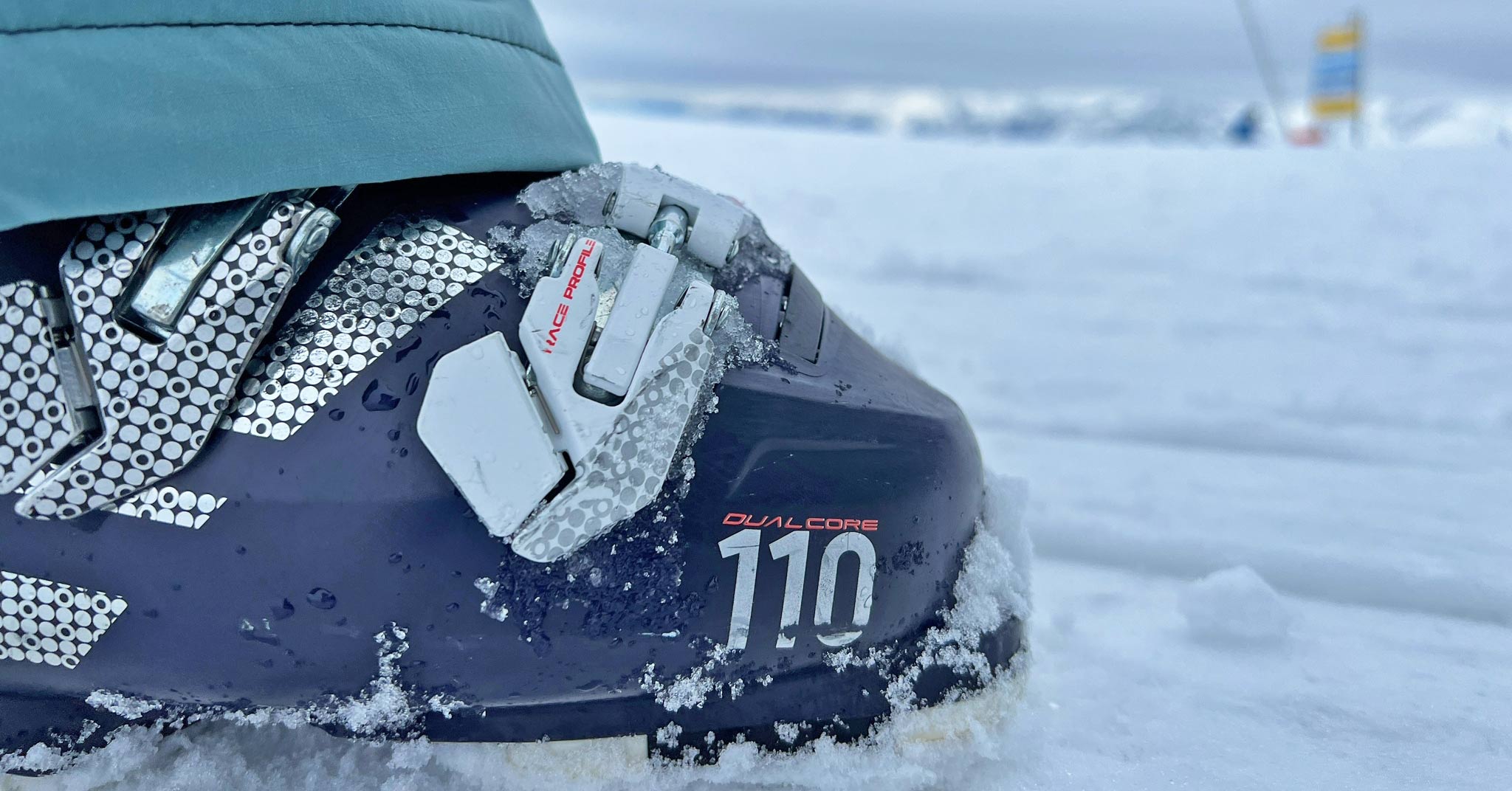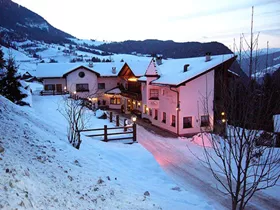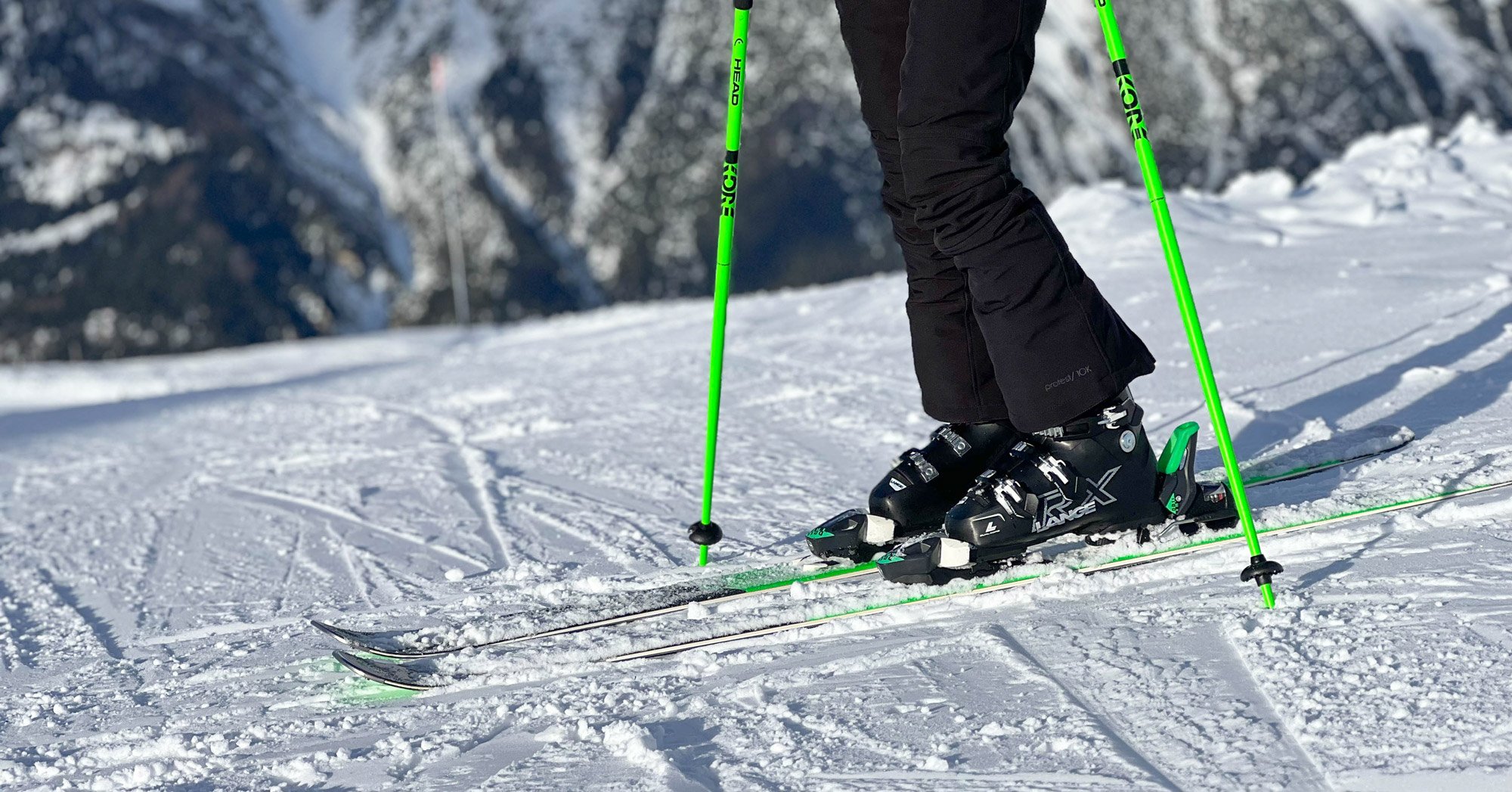

'Do you ski on a ski boot with an 80-degree flex? That's a beginner's boot! I have 130!' It sounds as if the flex of your ski boot could indicate how well you can ski. An advanced skier needs a ski boot with a high flex. Right? The general impression is that flex indicates the rigidness of the ski boot. This is only partially true, and the number says very little, explains boot fitter Richard. In any case, the flex of a ski boot means less than you would think. This article explains the sense and nonsense of a ski boot's flex.
Ski boot flex: there is no standard
To learn about a ski boot's flex, I spoke to Richard, a certified boot fitter. I had noticed before that a ski boot with a flex of 80, felt much stiffer and more rigid than a different one with a flex of 100. So what exactly does that number on my ski boot say? Richard explains that ski boot manufacturers invented a ski boot's flex. Using a number, they indicate the rigidness of a boot. In itself, a great system, provided there is a controlled standard. But that is precisely the problem: every ski boot manufacturer has its own standard.

A flexible or rigid ski boot: which is better?
So flex should indicate whether a ski boot is flexible or rigid, but what is meant by that? You feel the rigidness of a ski boot when you stand in the skiing position and bend through your ankles, knees and hips. The easier you can bend your ankle and thus come forward with your knees, the more flexible the ski boot is. The trick is to choose a ski boot that matches your skiing technique, weight and build in terms of stiffness. For example, some people can bend through their ankles much more easily than others.
Does that sound complicated? Yes, quite a bit. It boils down to the fact that a ski boot that is too rigid will limit your development and skiing technique. If you cannot bend your ankles properly, you will be 'pushed backwards', and you will not have a central position and correct pressure on your skis. If your boots are too flexible, you will 'push' through your boots and therefore have too little control over your skis. Be honest about your skiing level, and don't worry if it turns out that you need a more flexible ski boot. Many winter sports enthusiasts ski on boots that are too rigid, says Richard.
Different brands, different flex
Since the flex of a ski boot is not standardised, a Lange ski boot with a flex of 140 feels very different from a Nordica ski boot with a flex of 140. So, one can only compare the number of flex between other numbers of the same brand. You can assume that a Salomon shoe of 80 is more rigid than a Salomon shoe with a flex of 110, so comparing the flex of different brands is nonsense, Richard explains. Also, ski boots are made of different types of plastic. And these plastics can react very differently to temperature differences. A ski boot may feel flexible in the shop but may become super stiff at -10 degrees.

A flexible ski boot provides more comfort
There can be all kinds of reasons for choosing a flexible ski boot. Either your ankles are inflexible, or you have a light build. You are a beginner or prefer to ski relaxed with little power and effort. In addition, a flexible ski boot is forgiving. This allows you to make a mistake without immediately suffering the consequences. A supple ski boot offers more comfort and better cushioning. You won't feel the bumps and lumps on a slope as much.
A rigid ski boot requires technique and energy
A rigid ski boot is generally suitable for skiers with good technique who ski with power, who are a bit heavier or can easily bend their ankles. These stiffer ski boots provide more direct steering of the skis, but if you make a mistake, you will also suffer the consequences sooner. In addition, the cushioning of rigid boots is less, and they usually have thinner liners (inner shoes) to get more direct steering. So you sacrifice comfort with a rigid ski boot.
The bottom line: try on, compare and ask for advice
Don't be blinded by the number of flex, but get good advice in a specialised shop. Be honest about your skiing level: do you have good technique? Do you like to ski at speed or relatively relaxed? On which terrain and slopes do you prefer to ski? Based on the answers to these questions, a good boot fitter will recommend several ski boots. Test how rigid the boots feel and share your experiences with the salesman. Together, you will find the ski boot that suits you best.















